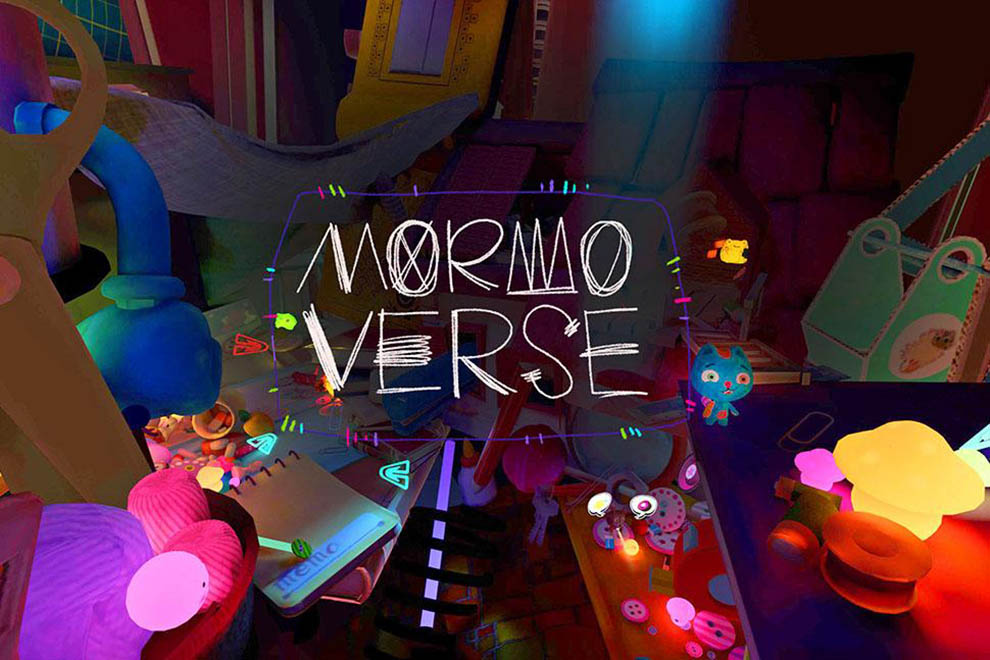Face to face with Georgy Molodtsov among the leading experts in VR/360 video production

We rounded up our journey to Immersive Island with a chat with Georgy Molodtsov, a film and XR director and producer who once curated Jean-Michel Jarre’s virtual shows. Since 2016, Molodtsov is a leading expert of VR/360 video production and curator of 50+ XR festivals in Europe. This year in Venice Immersive Out of Competition in the Best Worlds – VRChat section with MormoVerse: Under the Pillow.
Venice Immersive is one of the largest such events in the world. What do you think sets it apart from other festivals, and why do you think Venice grew into such an important innovation hub for XR?
Many other events visualized the metaverse during the pandemic. Venice planned a road ahead that not only gives prominence to art in the XR field, but also gives the chance to compete with traditional XRs. This allows creators and worldbuilders to trust the system, because they know that their work will be appreciated by the most important voices in the field.
Give us an outlook on the evolution of XR festivals globally. What key trends and emerging themes have you observed over the last few years?
Performative formats in the metaverse, mixed-reality narration, and festival-commissioned pieces that support creators with vision and experience. These are the trends I observed. The Tribeca Film Festival, for example, commissioned the largest part of works for a specific format, which made them unique for that one Festival. Tools like Vision Pro or Quest 3, together with Software Development Kits supplied by hardware and software companies allow to experiment with mixed reality more easily. They also allow creators more flexibility to test their concepts. Motion capture support on different metaverse platforms made multiplayer online theatre performances more accessible, thus allowing for a more natural corporeal representation in VR, and for a larger array of suitable genres.

The XR market changes constantly. Can you comment on this phase? Is it crisis, or is it transition? What specific factors influence these changes?The downturn in the gaming market influenced most actors, but the XR market, which is a niche, under-the-radar market, wasn’t all that affected. Rather, most high-level professionals found themselves free to enter that very market. At the same time, different Europe-based metaverse platforms (like our own VRROOM) had to shut down, slow down, or change course. Europe maintains a single fund to finance XR projects and considers XR on par with film, which gives producers more opportunities to access financing. However, the subsidy system won’t help as much with marketing and commercial success for the majority of projects. The release of Quest 3 and Vision Pro affected the market greatly, as did the fusion of Meta Store and App Lab, but we need more marketing efforts to compete with video games and traditional XR platforms, as well as get the attention of visor users.
As a creator and curator, what aesthetic elements do you believe are essential for the public to fully appreciate XR projects? Since the industry is in its infancy, are there budding aesthetic elements or best practices that you think are particularly valuable?
Each new generation of visors offers better quality and fewer limitations in terms of content compression and optimization. Still, these limitations may work in creators’ favour, since they will have to find ways to impress their audience with fewer available tools viz. traditional media. In the OXYMORE project we made for Jean-Michel Jarre, for example, we built our world using almost no textures, only shapes and colours, and it lasts a good fifty minutes. We can certainly say that the less is more approach in XR narrations works well to set ourselves apart from AAA or AA games released for visor interface. In some sense, aesthetic and budget limitations bring about a sort of art house feeling in XR, similar to the same effect they may have on traditional cinema. People know they are about to see art, which may be entertaining or contemplative. The Venice Film Festival is famous for its ability to market art to a larger audience, and does the same with immersive art.

Many XR projects have been inspired by game design. How do you feel about this influence? Do you believe that the importance of the user’s role and interaction is an essential feature of XR?
For a long time, 360-degree film stood out in XR for their linear nature, which is different from what video games are all about. Interactive experience applied the same principles of game design since the beginning of the new VR era in 2014. It was also a time of experimentation. With standalone VR visors entering the market, with Quest 1 and Pico Neo, creators had access to all XR game design tools, though they also had the responsibility to create works that their audience would like. There are people around that never even tried VR, and for them, any experience is a first contact where creators make the rules. Others already know how XR games work and adapt their expectations based on their gaming experience. This demands we satisfy the audience’s needs while balancing our right to our own creative language that conveys our message the way we want it to. It is very interesting to see how the role of the audience and the expressive boundaries of XR art move and change in mutual adaptation…
MormoVerse: Under the Pillow
by Georgy Molodtsov
Out of Competition – Best of Worlds [VRChat]